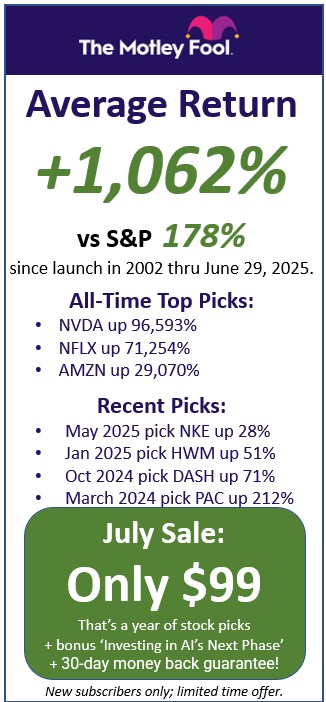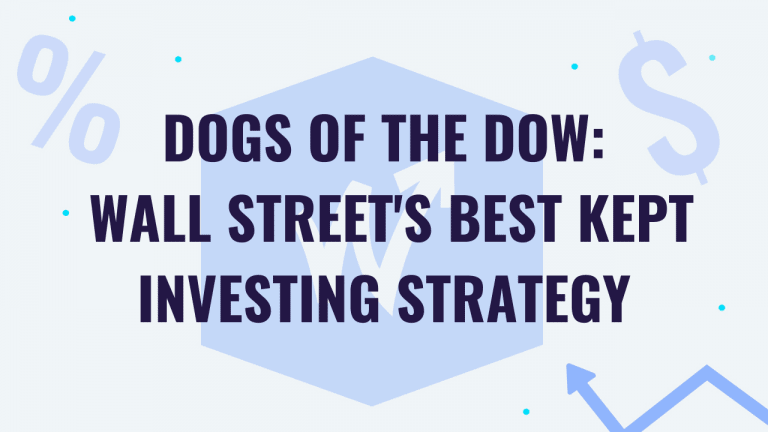In this article, we’ll be taking a closer look at one of the simplest but most effective investing strategies out there: the Dogs of the Dow.
But before we get down to the nitty gritty, let’s start with a quick recap on dividends.
Dogs of the Dow Background: Dividends
You may already know the basics about dividends. (Especially if you’ve already read our article and watch our video on them!) When a company makes a profit, it can put that money back into the company or choose to give some of it back to its investors through a cash payment called a dividend.
The Dividend Equation
One equation we’ll need to know for the Dogs of the Dow strategy is dividend yield. The dividend yield of a stock tells us the dividend it pays as a percentage of the stock price. So the equation looks like this:
Dividend Yield = Annual Dividend / Current Stock Price
Dogs of the Dow Strategy
So now that we’re all caught up, let’s dive into today’s lesson. The Dogs of the Dow strategy, which was popularized in the 1990s by Michael B. O’Higgins, is actually pretty simple. You just look at the Dow Jones Industrial Average, which is an index that tracks 30 of the largest public U.S. companies, and you buy the ten stocks with the highest dividend yields. Easy, right?
Now, the purpose of the Dogs strategy can be a little more complicated than it may seem.
It might look like we’re investing in companies with high dividend yields so that we can take advantage of those dividends and use them as income. But in reality, the purpose of the Dogs strategy has a lot more to do with the price of the stock than it does with the dividend. Let me explain: if the dividend yields of certain stocks in the Dow Jones Industrial Average are particularly high, then that might mean that the price of those stocks has recently fallen. Since the stock price is in the denominator of the dividend yield equation, when stock price falls, the dividend yield goes up. Makes sense, right?
If the actual dividend paid stays the same, but the stock price falls, then the dividend is larger when viewed as a fraction of the stock price!
So, what’s the point of buying stocks if their prices recently fell? Doesn’t that mean that we’re buying bad stocks?
It might seem this way from the perspective of some analyses, which is where the name “Dogs” comes from. But there’s actually a pretty simple explanation as to why we might choose to invest in these types of stocks. Keep in mind what the Dow actually is: it’s an index that follows 30 of the largest companies in the U.S. We’re talking about huge blue-chip companies with great track records that are considered extremely reliable.
So, the idea is that by investing in blue-chip companies whose prices have fallen, we can assume that they’re still great companies to invest in and that we’re simply buying them at a discount because the price will eventually go back up.
Advantages and Disadvantages
What are some of the positives of Dogs strategy?
Advantages
Well, historically speaking, it works. The Dogs have beaten both the Dow Jones Industrial Average as a whole and the S&P 500 on average since 2000, making dividend investors very happy.
Another advantage: it’s super simple! Investors who don’t have hours upon hours to pour into stock research and analysis might like this strategy because the only statistic you have to look at is the dividend yield.
Disadvantages
Now, how about the cons of the Dogs of the Dow? The biggest con is its lack of diversification. When you use a strategy that only involves 10 stocks (and weighs them evenly), each stock is worth 10% of your overall portfolio. This means that a big drop in one stock would cause a relatively big drop in your portfolio.
Additionally, since we’re picking stocks based only on their dividend yield and without looking at what type of industry they’re in, we could end up with a lack of exposure to certain sectors, depending on the year.
Another risk to be considered before choosing the Dogs of the Dow strategy is the fact that, just because we’re investing in blue-chip stocks, doesn’t mean they’re perfectly safe investments.
Any stock, whether it’s a blue-chip or a pink sheet, can suffer a big loss. For example, in 2009, General Motors filed for bankruptcy. Unfortunately for dividend investors using the Dogs of the Dow strategy, GM was also part of the Dogs portfolio that year. After the bankruptcy filings, GM stock went down 85%. That’s a hard pill to swallow if that stock is 10% of your overall portfolio!
Conclusion
As is the case with many personal investing questions, there’s no perfect answer as to what investing strategy is the best. Every investor is unique and has their own goals, interests, and level of risk tolerance.
If the Dogs of the Dow strategy sounds right for you, then go for it! If it seems a little too simple for your taste, no worries; check out a different strategy! At the end of the day, your portfolio should be tailored to fit you.
FIRST STEPS TO FINANCIAL SUCCESS:
At WallStreetSurvivor, we love with the stock market and we are obsessed with finding the best deals to help us all make more money. Here is our list of the BEST STOCK SERVICES to help you get start investing correctly:
1 - Get Up To $1,000 in FREE Stock with Robinhood! The fastest growing brokerage, Robinhood, just hit 10,000,000 accounts. Why? Because they DON'T charge commission AND they are giving away up to $1,000 in free stock when you open an account. CLICK HERE to learn more about Robinhood.
2 - Not Sure What Stocks to Buy? Get the BEST Stocks Picks! We subscribe to dozens of stock newsletters, and there is one that has outperformed all the rest for the last 5 years. This one service has an amazing average return of 74.63% on ALL of their stock picks the last 3 years. Their recent winners have been stocks like Shopify (SHOP) up 866%, Match Group (MTCH) up 549%, Paycom (PAYC) up 235%, and many others that have doubled in the last 3 years.
CLICK the image below go see their latest offer...

3 - Don't Pay Commission! Open a Real Brokerage Account and Trade Commission-Free. Here's the GREAT NEWS--the brokerage industry is very competitive right now and some brokers are offering FREE COMMISSIONS and other incentives to acquire new accounts. CLICK HERE to get commission-free trades. Or CLICK HERE to get a review of the Best Online Stock Brokers.
4 - Get the Best Stock Picking Newsletter of 2020 We subscribe to dozens of stock newsletters. Some of these newsletters are longer term investing, some are short term, and some are penny stocks. Find the best newsletter for your interests. So which stock newsletters are the best? Visit our review of the best stock newsletters.
5 - Is the Motley Fool a Good Source of Stock Picks? The Motley Fool is probably the best know stock newsletter service. Is it worth it? Read our full Motley Fool Review
